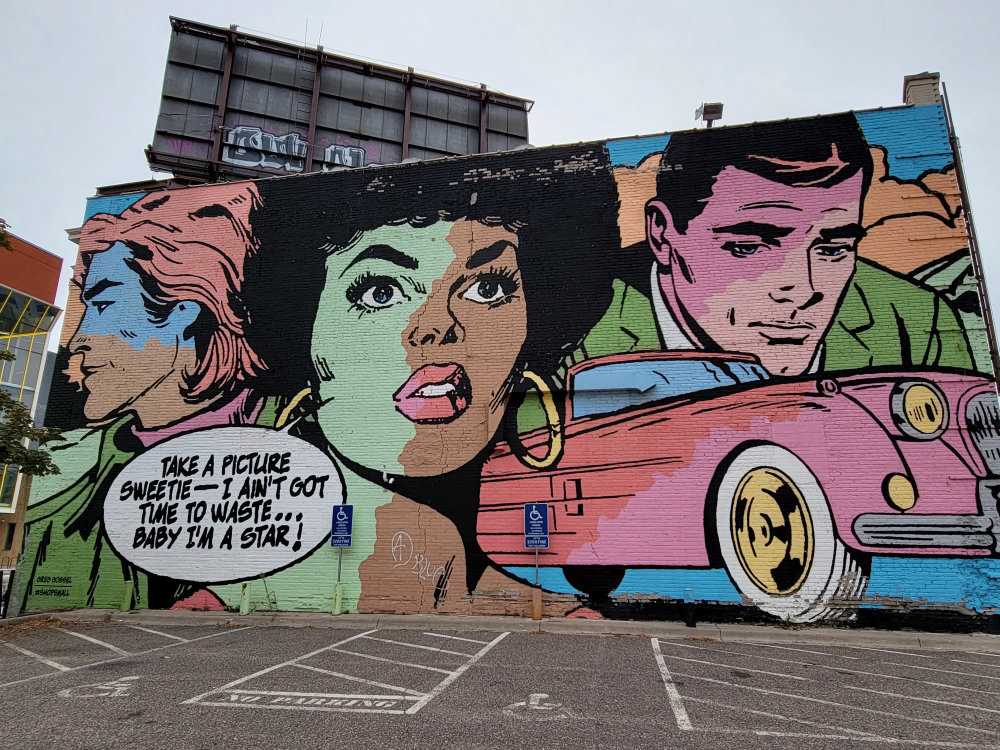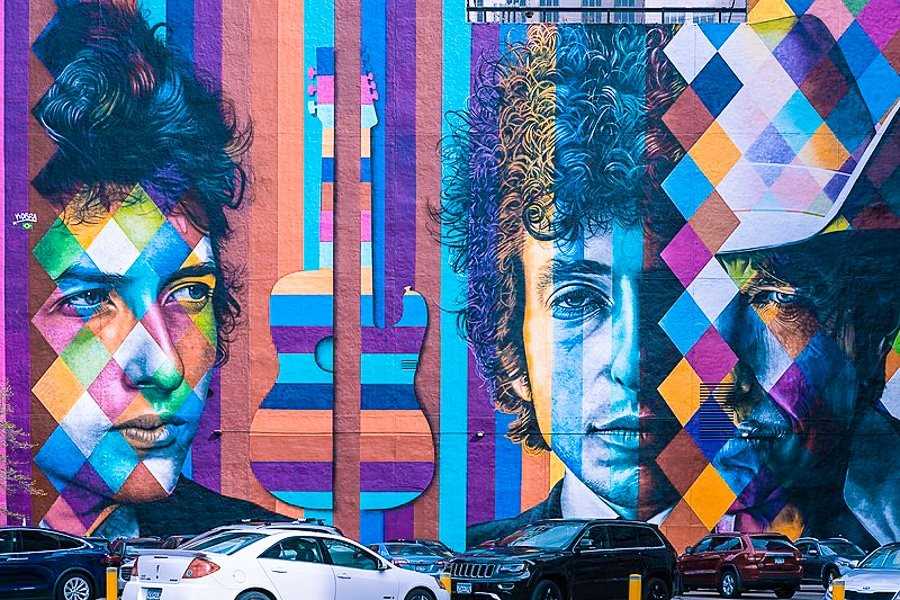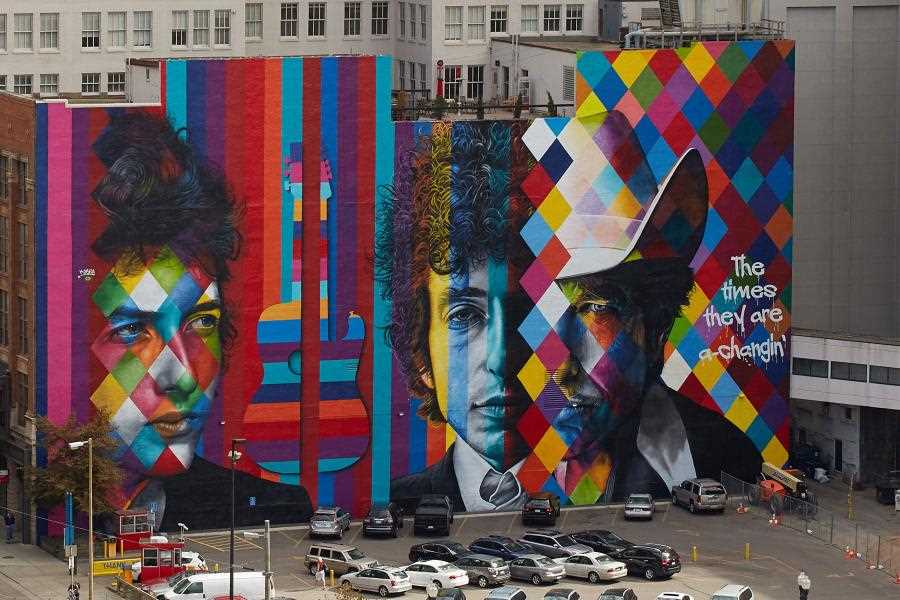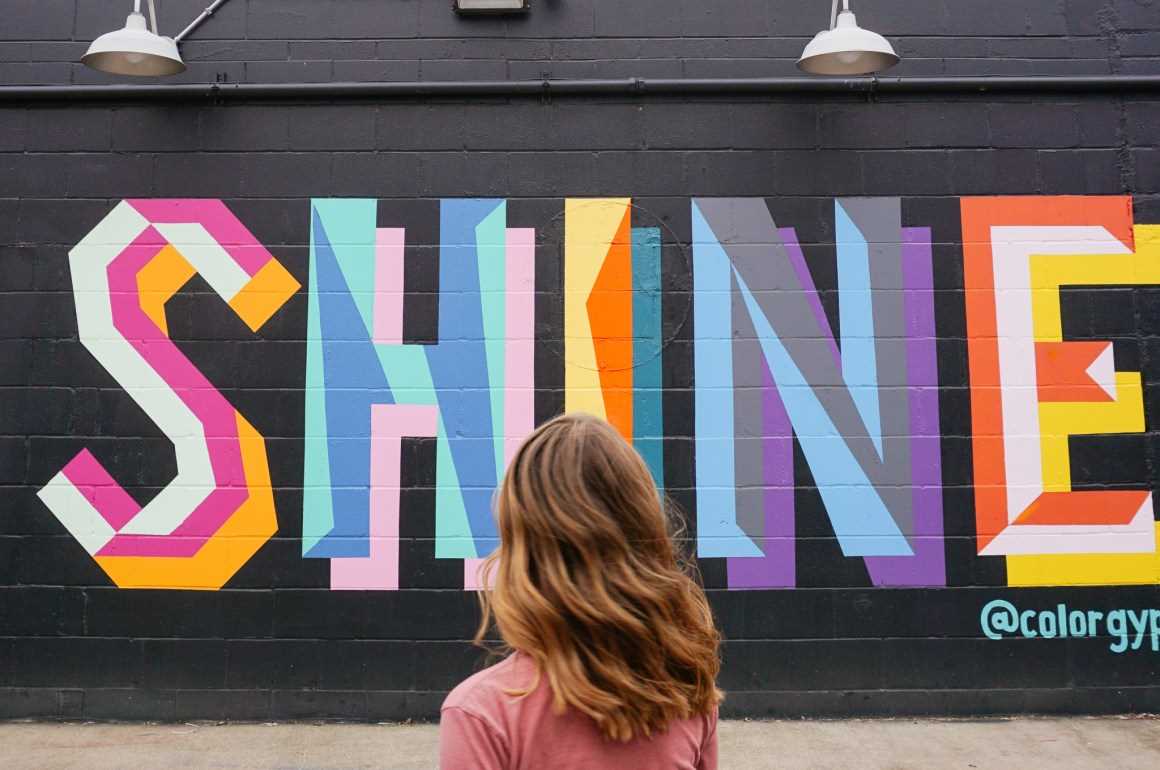
Minneapolis, the largest city in Minnesota, is known for its vibrant street art scene.
Every neighborhood in Minneapolis is adorned with colorful murals, graffiti, and street art installations that showcase the city’s creative spirit. Whether you’re strolling through the trendy neighborhoods of Uptown and Northeast, or exploring the historic streets of Downtown and the Warehouse District, you’ll be captivated by the stunning artwork that covers building facades, alleyways, and even sidewalks.
From large-scale murals that tell stories of social and political issues to smaller, hidden gems that require a careful eye to discover, Minneapolis offers a diverse range of street art styles and themes.
One of the most iconic street art locations in Minneapolis is the famous Wall of Forgotten Natives in the Phillips neighborhood.
This mural, created by local artists and community members, pays homage to the indigenous people who have been historically marginalized and forgotten. The powerful imagery and vibrant colors serve as a reminder of the rich Native American heritage that is an integral part of Minneapolis’ history.
Street art in Minneapolis is not only a form of artistic expression but also a way for communities to come together and reclaim public spaces.
Through collaborations with local businesses, art organizations, and community members, street artists in Minneapolis are transforming once-blank walls into vibrant canvases that reflect the unique identity of each neighborhood.
Whether you’re a local or a visitor, exploring the street art in Minneapolis is an immersive and visually stimulating experience that showcases the city’s passion for creativity and inclusivity.

Over the past few years, Minneapolis has experienced a significant rise in street art. The city’s walls have become vibrant canvases for local and international artists alike, contributing to the cultural landscape of the city.
A Growing Art Movement

Minneapolis has always had a thriving art scene, but in recent years, street art has become a prominent form of expression. What was once considered vandalism is now seen as a legitimate art form, with many artists gaining recognition and respect for their work.
One of the reasons for the rise of street art in Minneapolis is the city’s support for public art projects. The city has established programs and initiatives that encourage and fund street art projects, giving artists the opportunity to showcase their talent in public spaces.
A Reflection of Identity and Culture

Street art in Minneapolis often reflects the city’s unique identity and diverse culture. Many artists use their work to explore social and political issues, shedding light on important topics such as inequality, racial justice, and climate change.
Additionally, street art in Minneapolis incorporates elements of the city’s rich history and cultural heritage. Artists draw inspiration from local landmarks, iconic figures, and historical events, creating a visual narrative that resonates with both residents and visitors.
This form of art also serves as a platform for marginalized voices to be heard. Street artists in Minneapolis often use their work to amplify the voices of those who have been historically silenced or marginalized by society.
Creating Vibrant Spaces

The rise of street art has transformed Minneapolis into a vibrant and colorful city. The once plain and dull walls now burst with creativity and life, attracting both locals and tourists.
Street art has also contributed to the revitalization of certain areas in the city. Previously neglected or unappealing spaces have been transformed into artistic hubs, attracting foot traffic and boosting local businesses.
- Local Initiatives
- International Collaboration
- Positive Impact on the Community
Local initiatives and organizations have played a crucial role in fostering the growth of street art in Minneapolis. They provide artists with resources, legal walls, and networking opportunities, creating a supportive community for aspiring and established street artists.
Minneapolis has also attracted international street artists who have collaborated with local artists to create stunning murals and installations. These collaborations have not only enhanced the city’s art scene but have also fostered cultural exchange and understanding.
The rise of street art has had a positive impact on the community, promoting inclusivity, dialogue, and engagement. Public art has the power to bring people together, spark conversations, and inspire creativity.
As street art continues to flourish in Minneapolis, the city’s walls will continue to tell stories, provoke thought, and inspire the next generation of artists.
The Impact of Street Art on the City

Street art has had a profound impact on the city of Minneapolis. From its humble beginnings as an underground art form to its current status as a celebrated cultural phenomenon, street art has transformed the cityscape and ignited a sense of creativity and expression among its residents.
1. Beautification of Public Spaces

One of the most noticeable impacts of street art is the beautification of public spaces. Muralists and graffiti artists have transformed bare walls and dull alleyways into vibrant works of art. These colorful and captivating pieces have turned once overlooked areas into popular tourist attractions and gathering spots for locals.
2. Preservation of History and Culture

Street art serves as a visual representation of the city’s history and culture. Many artists draw inspiration from local traditions, ethnic diversity, and significant events to create their artworks. These murals and graffiti pieces have become important cultural markers, preserving the stories and narratives of Minneapolis’s diverse communities.
Additionally, street art often reflects the social and political issues of the time. Artists use their works to raise awareness and initiate discussions about topics such as racial equality, environmental conservation, and LGBTQ+ rights. This form of artistic activism adds a powerful voice to the city’s social fabric.
3. Economic Growth and Tourism

The presence of street art has positively impacted the local economy. Murals and graffiti pieces have attracted tourists from around the world who come to admire and photograph these works of art. As a result, local businesses, restaurants, and shops have experienced increased foot traffic and revenue, contributing to the overall economic growth of the city.
Furthermore, street art festivals and events have become major attractions, drawing in visitors and boosting tourism in Minneapolis. These events not only provide a platform for artists to showcase their talents but also create a sense of community pride and engagement.
The Colorful Murals of Minneapolis

Minneapolis is known for its vibrant street art scene, with colorful murals adorning the walls of buildings all across the city. These murals not only add beauty to the urban landscape, but they also tell stories and showcase local talent.
Many of the murals in Minneapolis are created as part of the city’s public art program, which aims to bring art to the streets and make it accessible to all. These murals are often painted by local artists who are inspired by the city’s diverse culture and history.
Themes and Styles

The murals in Minneapolis vary in themes and styles, reflecting the city’s eclectic identity. Some murals depict scenes from nature, with vibrant flowers and animals. Others showcase portraits of local heroes or important figures in the city’s history, paying homage to their contributions.
The styles of the murals also vary widely. Some murals are realistic, with intricate details and lifelike images. Others are more abstract, with vibrant colors and bold shapes. Regardless of the style, each mural tells a unique story and adds a touch of artistry to the city’s streets.
Community Engagement

The creation of these murals often involves the local community, with residents, businesses, and artists coming together to plan and execute the artwork. This collaborative process not only fosters a sense of pride and ownership within the community, but it also helps to create a deeper connection between the people and the art.
Many of the murals are located in neighborhoods that have historically been underserved or marginalized. By bringing art to these neighborhoods, the murals help to revitalize and beautify the area, creating a sense of vibrancy and hope.
The colorful murals of Minneapolis are not only a feast for the eyes, but they also serve as a reminder of the city’s creativity and resilience. They add beauty and character to the urban landscape, and they inspire both residents and visitors alike. Next time you’re in Minneapolis, take a stroll through the city’s streets and discover the array of colorful murals that await you.
Graffiti as an Artistic Expression

Graffiti has long been regarded as a form of vandalism or illegal activity, but in recent years, it has gained recognition as a legitimate form of artistic expression. In cities like Minneapolis, graffiti has become an integral part of the urban landscape, adding color, vibrancy, and creativity to city streets.
One of the appeals of graffiti as an art form is its accessibility. Unlike traditional art forms that are often confined to galleries or museums, graffiti is open to anyone with a can of spray paint and a willingness to take risks. This democratization of art allows for a diverse range of voices and perspectives to be heard, making graffiti a powerful tool for social change.
In Minneapolis, street art has become a symbol of community pride and identity. Local artists, such as Eduardo Kobra and Peyton Scott Russell, have transformed alleyways, buildings, and even the sides of buses into vibrant works of art. These murals not only beautify the city but also tell stories, spark conversations, and provoke thought.
However, it is important to differentiate between graffiti and vandalism. While true graffiti is created with permission or in designated areas, vandalism involves defacing private or public property without consent. By supporting and celebrating legitimate street art, Minneapolis is sending a message that graffiti can be a positive force in society.
| Benefits of Graffiti as an Art Form |
|---|
| 1. Encourages creativity and self-expression |
| 2. Provides an outlet for marginalized communities |
| 3. Beautifies urban spaces and reduces visual blight |
| 4. Stimulates conversations and social dialogue |
| 5. Inspires other artists and encourages collaboration |
As Minneapolis continues to embrace street art, graffiti will undoubtedly continue to evolve and thrive as a legitimate art form. It offers a unique platform for artists to express themselves and for communities to come together, fostering a sense of pride and unity.
The City’s Support for Street Art

Minneapolis is widely recognized for its vibrant street art scene, and the city has demonstrated a strong commitment to supporting and promoting this unique form of artistic expression. Through various initiatives and programs, Minneapolis has created an environment that not only encourages the creation of street art but also provides opportunities for artists to showcase their work.
One of the ways the city supports street art is through the allocation of public spaces specifically designated for graffiti and street art. These areas serve as legal canvases for artists to display their creativity without fear of prosecution. By providing these designated spaces, the city acknowledges the value of street art as a cultural phenomenon and recognizes the importance of providing opportunities for artists to share their talent with the community.
In addition to designated spaces, the city of Minneapolis also organizes events and festivals that celebrate street art. These events attract both local and international artists, creating a platform for artists to interact and collaborate. These gatherings not only foster a sense of community among artists but also allow for the exchange of ideas and techniques. As a result, these events contribute to the growth and evolution of the street art scene in Minneapolis.
Furthermore, the city actively seeks to involve the community in the creation and appreciation of street art. Programs such as mural projects engage residents in the process of beautifying public spaces through collaborative artwork. This involvement not only fosters community pride but also helps to deter vandalism and illicit graffiti, as residents develop a sense of ownership and respect for the art that adorns their neighborhoods.
Minneapolis’ support for street art extends beyond physical spaces and events. The city has also implemented policies that prioritize the preservation and protection of street art. Artists are respected as legitimate contributors to the cultural landscape, and their work is valued as an integral part of the city’s identity. This recognition provides street artists with a sense of legitimacy and encourages their continued involvement in the art form.
The Future of Street Art in Minneapolis

One exciting development is the growing acceptance and recognition of street art as a legitimate art form. Local authorities and organizations have begun to embrace street art as a means of beautifying public spaces and fostering community pride. Public art initiatives have been launched to commission street artists to create large-scale murals in prominent locations, transforming ordinary walls into stunning works of art.
Another factor shaping the future of street art is technology. With the advent of social media platforms and digital tools, artists now have a broader reach and greater visibility for their work. Platforms like Instagram and Facebook have become virtual galleries for street artists to share their creations, gain exposure, and connect with a global audience. Additionally, technology allows artists to experiment with new mediums and techniques, blurring the lines between traditional street art and digital art.
Furthermore, street art has the power to stimulate economic growth and tourism. Cities around the world have recognized the potential of street art to attract visitors and generate revenue. Minneapolis has already seen an influx of street art enthusiasts who visit the city specifically to explore its vibrant art scene. This visitor interest has led to the emergence of guided street art tours and street art festivals, further cementing Minneapolis’ reputation as a street art destination.
However, the future of street art in Minneapolis also faces challenges. Gentrification, rising property values, and changing city regulations can limit the space available for street art and impact the authenticity of the art form. Artists and community organizations must work together to preserve and protect the vibrant street art culture while ensuring that artists have the freedom to create and express themselves.

I am a mural enthusiast and a fervent admirer of street art. Rather than creating murals myself, I am passionate about collecting them. My love for street art knows no bounds. I am dedicated to curating and cherishing these artworks that grace the streets. My collection stands as a testament to my profound appreciation for this form of artistic expression.
read about me



